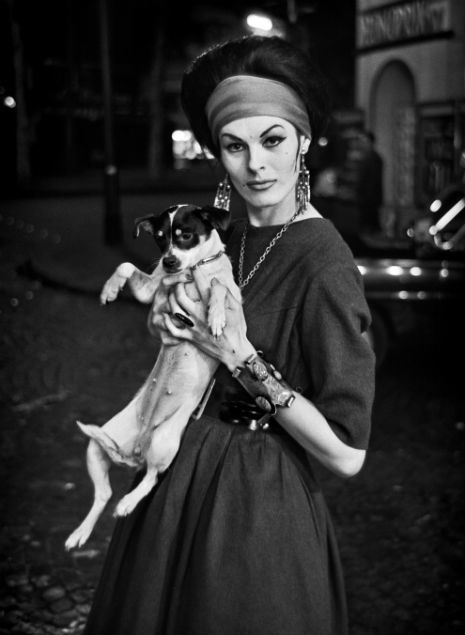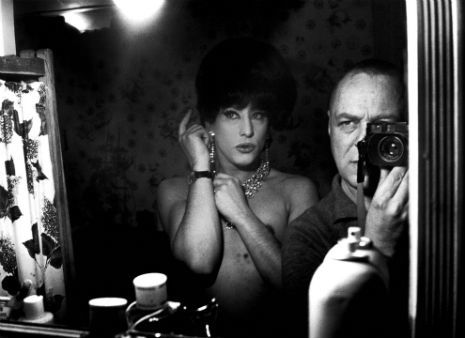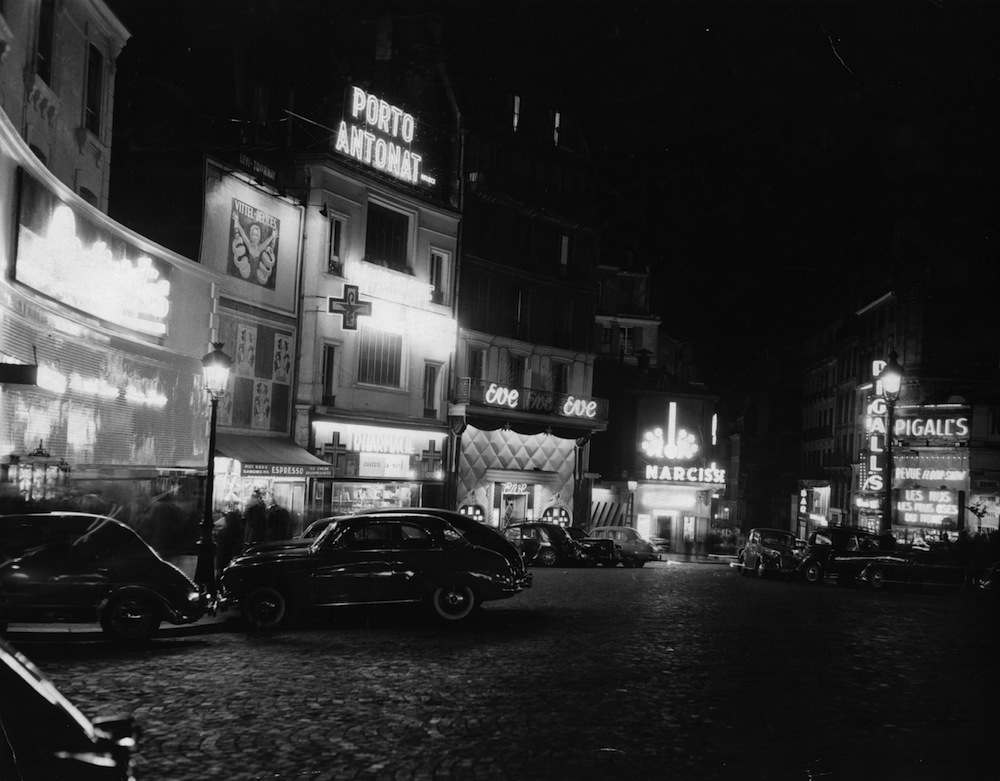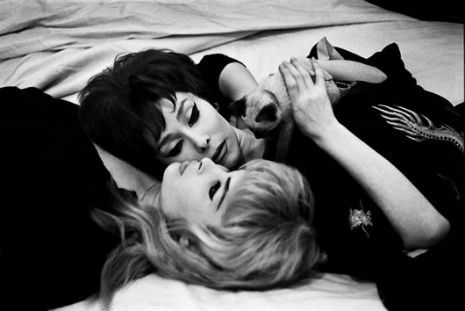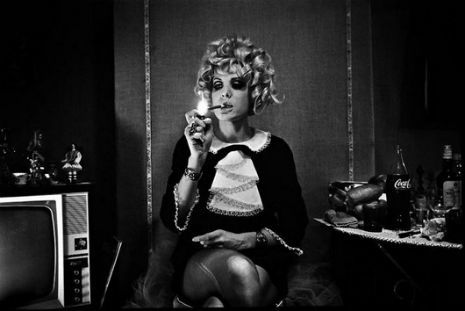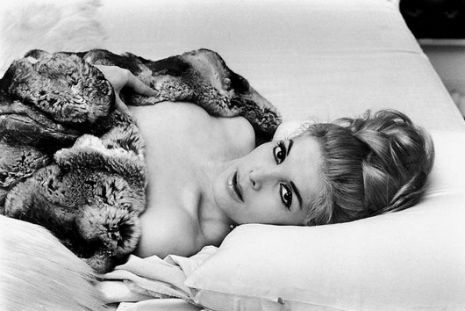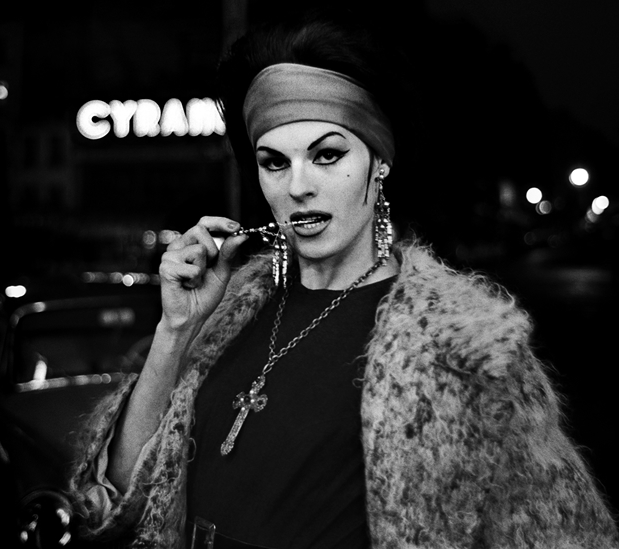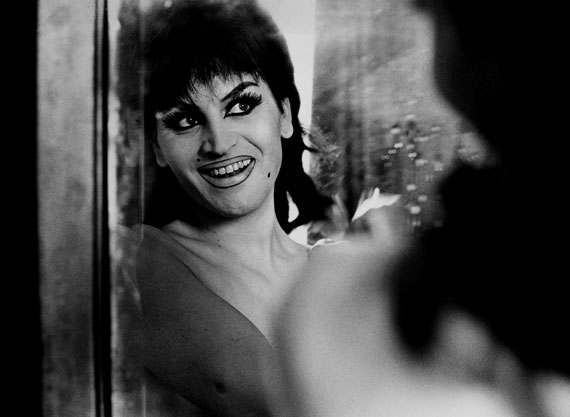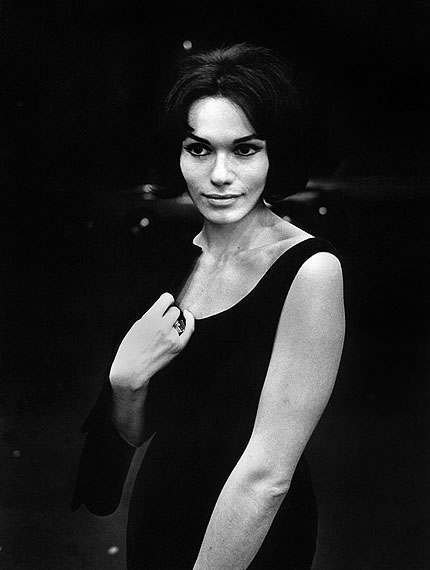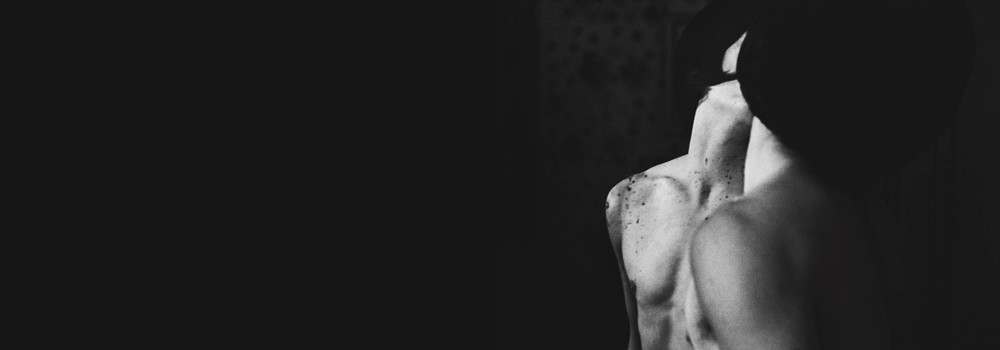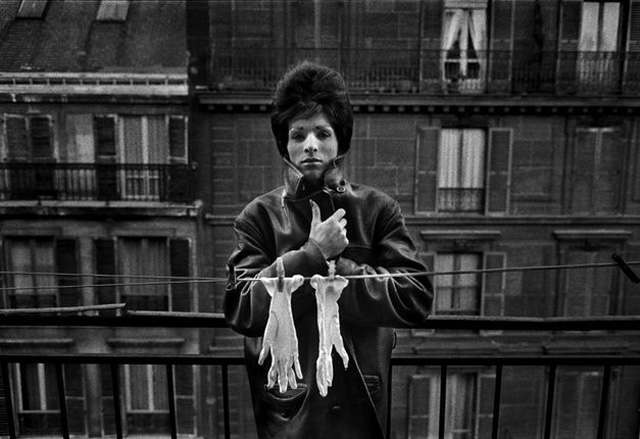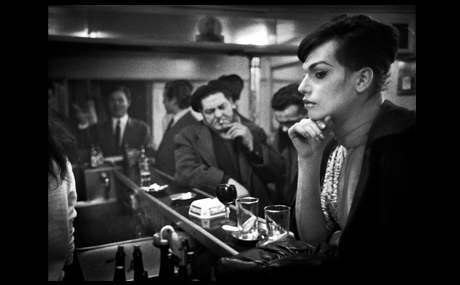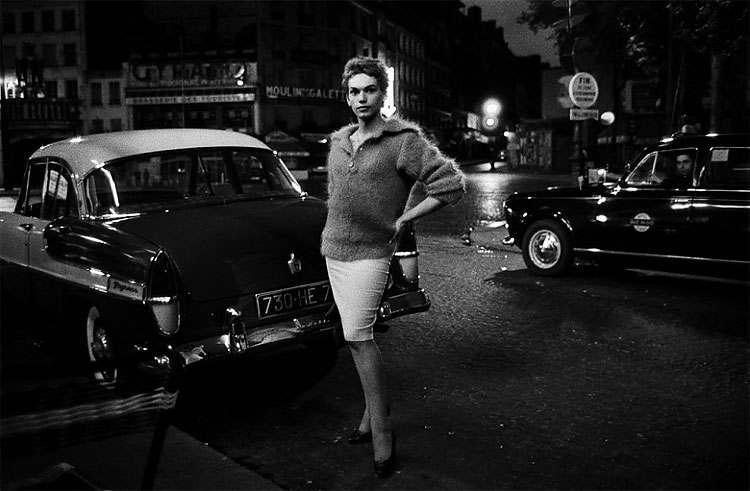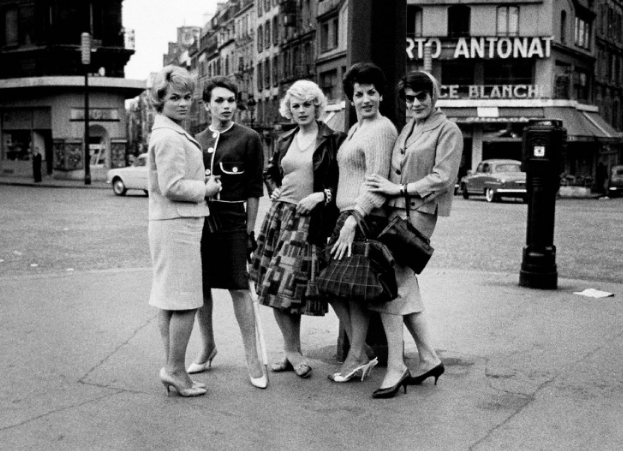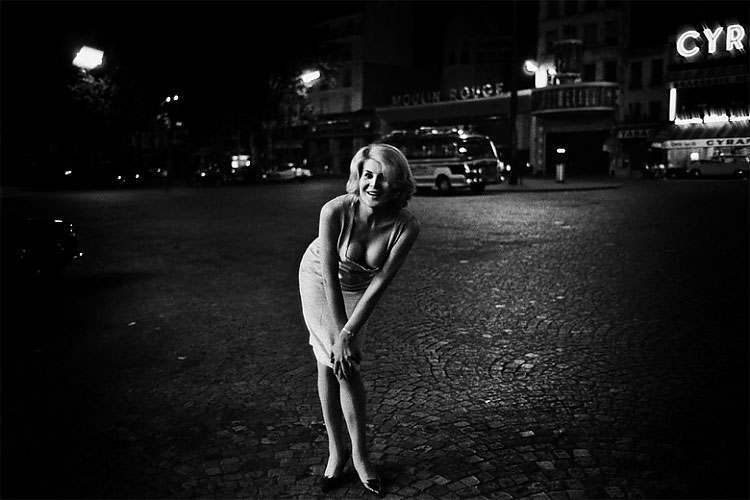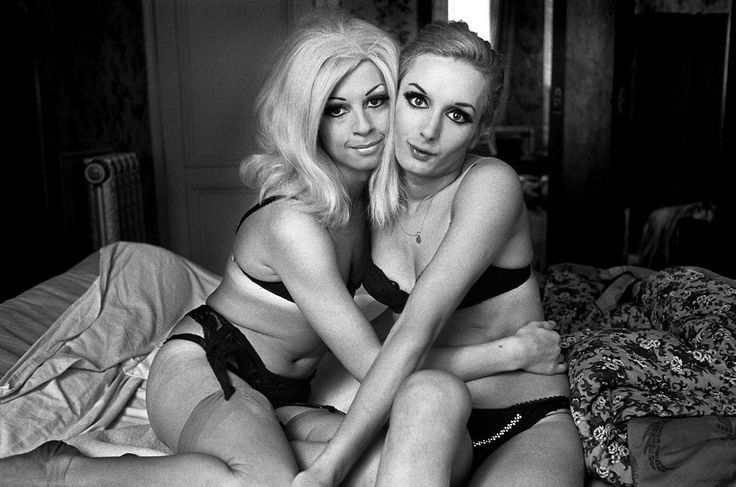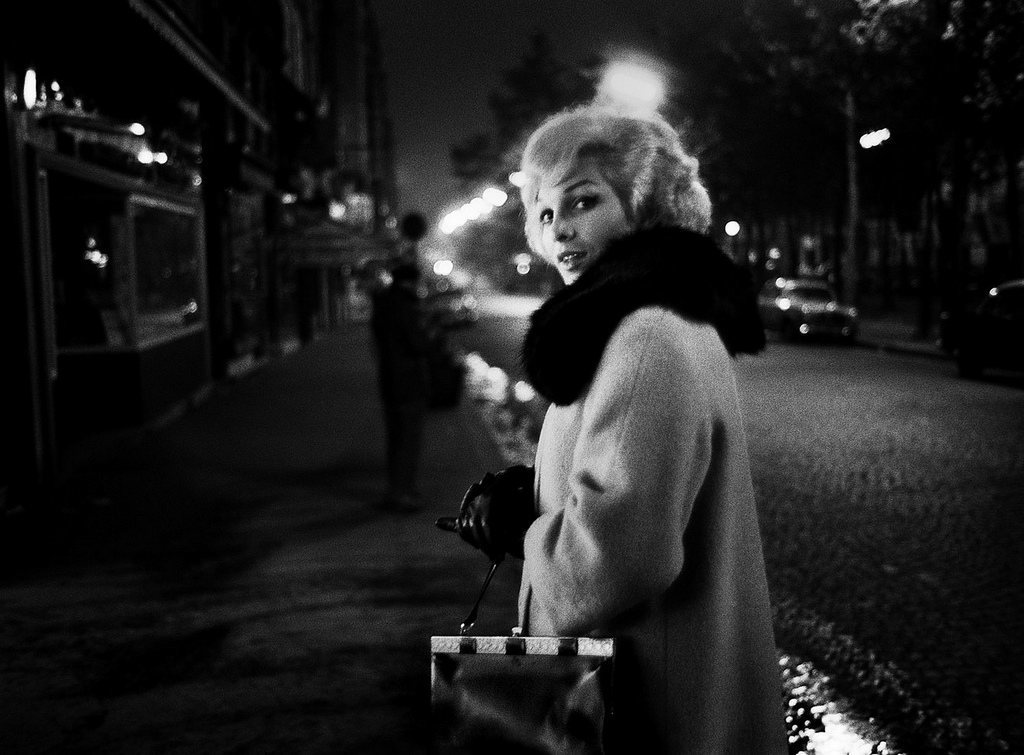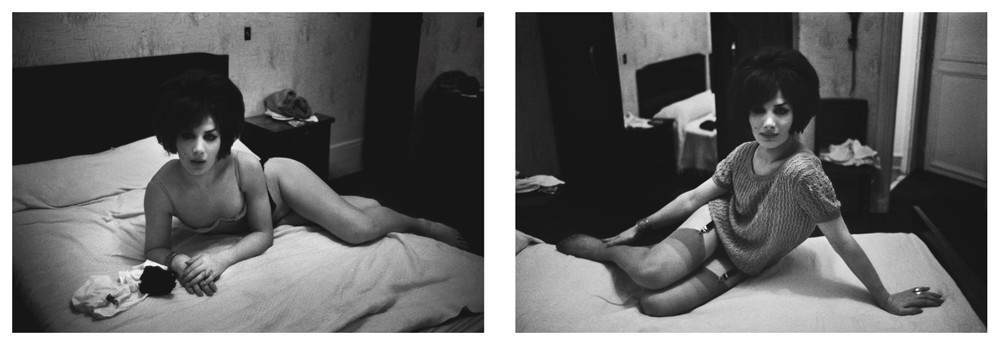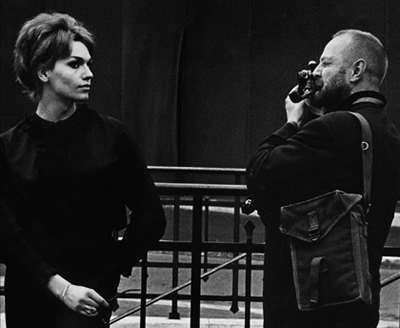In the 1950s and early 1960s Swedish photographer Christer Strömholm took these gorgeous photographs of transgender women in Paris. The women were pictured on the streets around Place Blanche and Pigalle where Strömholm was living.
Strömholm compiled the pictures in his 1983 book Les Amies de Place Blanche. He wrote:
“This is a book about the quest for self-identity, about the right to live, about the right to own and control one’s body. …These are images of people whose lives I shared and whom I think I understood.”
He wrote:
After the sun had set, the air cooled down. At the time when shadows stretched, we could catch glimpses of prostitutes walking out of alleys. Big and beautiful women. Some of them exceeded in height their hope-swollen clients. Surrounded by circuses, freaks and snakes, the prostitutes stood there in the buildings’ shadows, keeping a constant eye on the boulevard, the shows and the clients.
Midway through January, when the fairground people set off again, the boulevard went back to normal – the party was over. On the boulevard and in the alleys surrounding place Pigalle and place Blanche, the prostitutes – both male and female, lesbians, transsexuals, transvestites or in other words: the usual group – took back their old spots.
Prostitution was as active as it used to be at the end of the 19th century. Organized prostitution happened all year long. A desperate fight, both to earn the daily bread and, for transsexuals, to see their identitarian dreams come true.
These beautiful ladies dreamt of travelling to Casablanca to undergo surgery. The outcome of a transformation started a long time ago. These women were biologically born as men. They lived here, in the place Blanche neighbourhood. They worked in cabarets, sang, did stripteases. They were outspoken and they answered back immediately to the public, it was a typical Parisian tradition. A cocky and saucy sense of humour.
They earned 60 French francs a day, enough to pay for the food and the hotel room but not enough to afford the 40,000 francs surgery. The streets were their only solution. Some of them had loyal customers, others stood in the same place on the street. Here, prostitution was part of the neighbourhood life. A way to survive.
This is where I arrived in 1959. This is where I settled and started to tell of the life I shared with the transsexuals. They soon became ‘the friends of Place Blanche’.
Together, we lived a nightlife.
Often, around 2 o’clock in the afternoon, I heard knocking on the wall of my room. It was Cobra, telling me coffee was ready. We had coffee with milk in her room on the 5th floor of the hotel Chappe. There were breadcrumbs in bed. We had been sleeping since dawn and it would soon be dark.
Six transsexuals lived on my floor. Each of us rented a room for the month. Some had gas, which allowed us to cook a little. We remained quiet, in our respective homes. We had turned the day into night. It was in these moments that Cobra and others broke taboos by wearing skirts.
That was when General de Gaulle ruled France. It was the war in Algeria and ‘Aunt Yvonne’, as we called Madame de Gaulle, was the incarnation of morality. So she was the one who determined the lives of my friends. A man had the right to wear makeup or a wig, to put on a blouse or even tight leather pants, but he could never wear a skirt. No, not a man! In the darkness of the night, bans softened and police controls became less frequent. During the short morning hours, my friends could live more freely their women lives.
However, the police abused their power. The number of cop-dicks sucked over these years is incalculable.
It was mainly around place Blanche that young boys from Normandy, North Africa, Brittany or the south of France came to seek comfort, shared feelings, friendship and their feminine side. Most of them weren’t understood, so they fled their homes and often hostile families. Here on the place Blanche, they could live their conviction of being a woman, then draw in their self-confidence, take steps to consider an operation and change their lives. Become a hairdresser, a shop assistant, a nurse or a student, like Suzannah.
But before that, everything had to go well in Casablanca.
At the time of the Commune, there already were transvestites on the place Blanche. But it was in the late 50s that the word ‘transsexual’ began to be used.It was also at that time that it became possible for a man to physically become a woman thanks to hormones and surgery. But hormone therapy has also been the cause of tragedies. Often they were denied the help of a doctor. So they had to fend for themselves.
Sometimes they dealt with difficult problems, the consequences of which could be irreversible, or fatal: incorrect dosages, suicides… But they didn’t all want to undergo surgery. Some managed to find indulgence and understanding from a heterosexual friend who loved the person and not the sex.
My friends could not find work. In Paris, an ID card was necessary, and if the name did not fit the feminine appearance, any job became an inaccessible dream. There was no social security, and society’s unwillingness to understand made life impossible. This cost them dear. Common sense does not accept playing with identity. The State pushed people into prostitution even though it pretended to fight it.
Twenty-two years later, only one friend of mine still lives on prostitution. One in twenty.
When I arrived, it was Nana that I befriended. At first, she was a beautiful and intelligent ‘flapper’. Now, she is a woman, even more beautiful and intelligent. It was Nana who introduced me to Jacky, Sabrina, Gina, Cobra, Caprice, Miriam, Carole, Dolly, Zarah, Carmen, Paulette and the others. Gina and Cobra have died since. So did Caprice. She committed suicide in her small pad, rue Clef. Desperate, lost and alone – heroin was her final companion. The circumstances of her death are still unclear. Was it a conscious act or a fatal error? In any case, her situation was desperate.
Caprice, so beautiful and feminine, had become a father. The mother was a lesbian, professional actress, clear-headed and mindful.
She worked in a lesbian cabaret. She always wore a shirt and tie – manly and very smart in her black suit.
Gina, she had surgery at the Clinique du Parc in Casablanca. She came back to place Blanche with a new identity. She bought herself a small white sports car and an apartment. A few years later, she died of cancer
Sabrina became one of the great attractions of the Alcazar. Jacky works at the Carrousel, in Montparnasse. Carole and Nana have toured Europe as strippers. Dolly was the queen of Chez Nous for a while, in Berlin. Miriam is currently a call-girl in Montmartre. Zarah, who came from Hamburg, worked at Madame Arthur, the famous transvestite cabaret, rue des Martyrs in Pigalle. Now, her name is Frenchy and she lives in Hamburg again, where she works as a costume designer. Her work is recognised around the world.
Today, the boulevard between the place Blanche and place Pigalle is full of sex shops and gambling halls. Drugs have come down to the streets and prostitution is more organised than ever.
On the one hand, there is the head of the Corsican Mafia, on the other one, the Italian Mafia. Brazilian gangs are trying to find a place. Competition between clubs is tough, tougher than ever.Nothing has changed: the streets, the hotels or the places where transsexuals are. The quest for a new identity still starts here. It’s still prostitution that allows some to achieve their goal without help from society.
In the early 60s, I lived at rue Constance — near the rue Lepic — with Paulette. Each night, I took my pipe, my old Leica, a few Tri-X films, the little French I knew and I went down to the brasserie on the place Blanche. Everyone knew what I was doing. I never took stolen pictures. I worked without a flash; I only used the existing light, often neon light.
Over time I perfected my techniques of night photography. As I developed the films in my hotel room, I could quickly check the result on the negatives. If the pictures were poorly exposed or if I had committed a technical mistake it did not matter. I had every night ahead of me.
When dawn approached, at about six in the morning, the Metro was reopening. We drank our hot chocolates; bought the newspaper. We walked quietly along the boulevard, up the rue Lepic to go back to our small hotel rooms. In Paris, it was morning, but for the friends of the place Blanche, it was still night-time.
My friends lived together in a world apart, a world of shadows and loneliness, anxiety, hopelessness and alienation. The only thing they demanded was to have the right to be themselves, not to be forced to deny or repress their feelings, to have the right to live their own lives, to be responsible, to be at ease with themselves.
Nothing more.
It was then – and still is – about attaining the right to own one’s own life and identity.
Would you like to support Flashbak?
Please consider making a donation to our site. We don't want to rely on ads to bring you the best of visual culture. You can also support us by signing up to our Mailing List. And you can also follow us on Facebook, Instagram and Twitter. For great art and culture delivered to your door, visit our shop.


